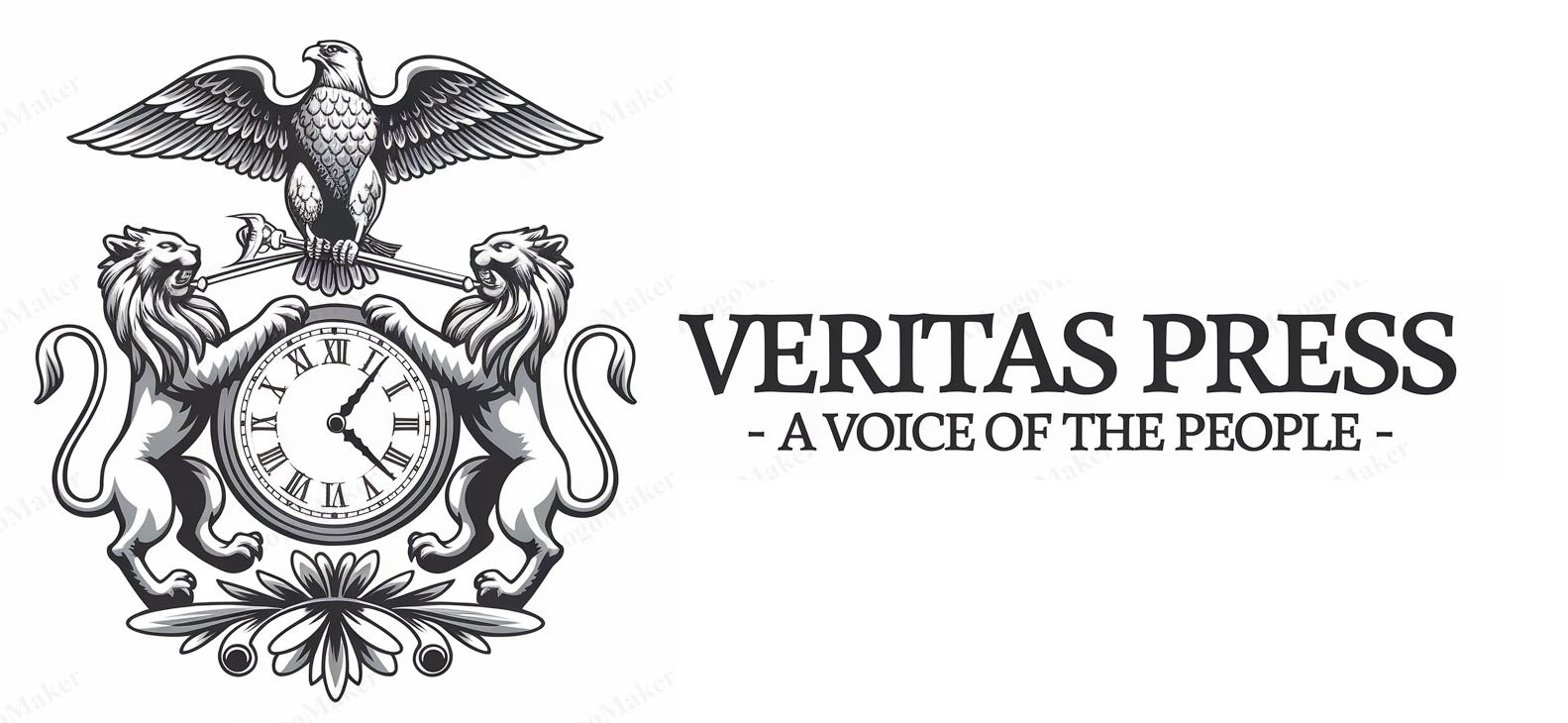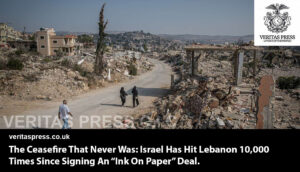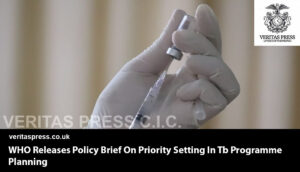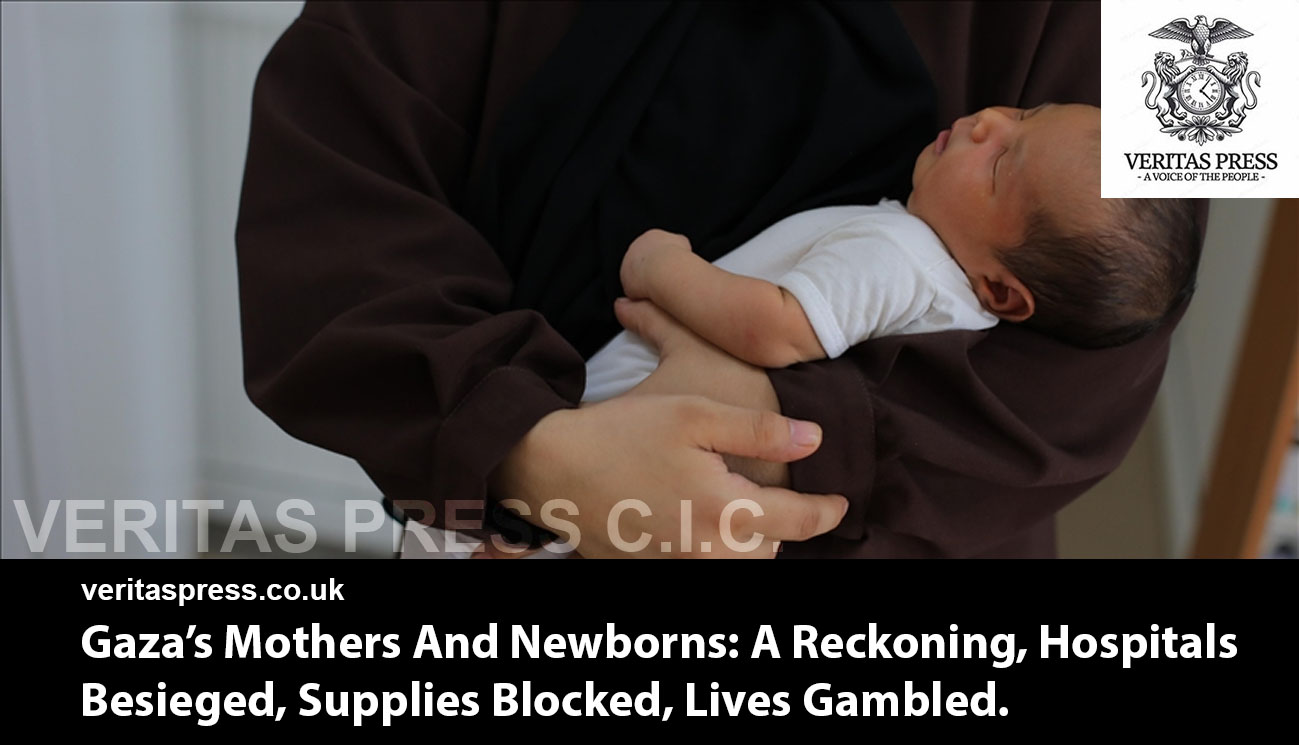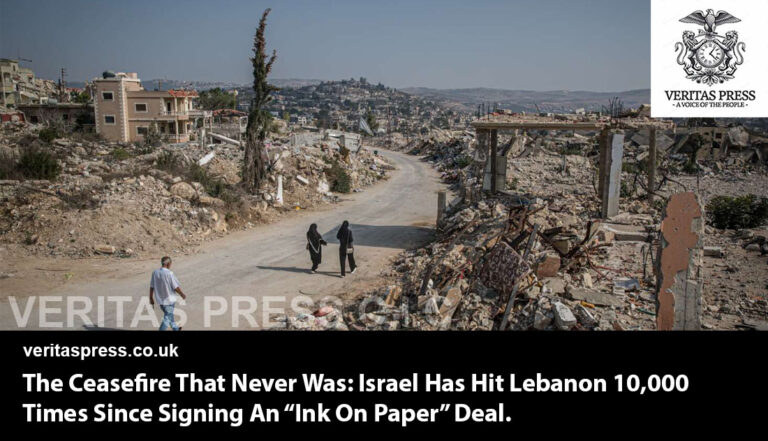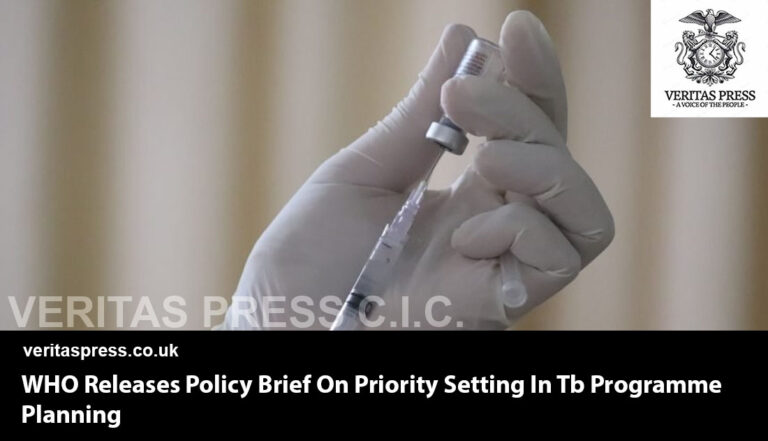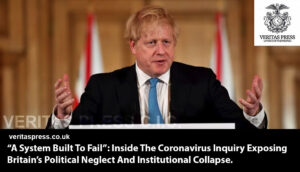Press Release: Veritas Press C.I.C.
Author: Kamran Faqir
Article Date Published: 03 Oct 2025 at 16:30 GMT
Category: Middle East | Palestine-Gaza-West Bank| Strike On Israel
Source(s): Veritas Press C.I.C. | Multi News Agencies

Business Ads
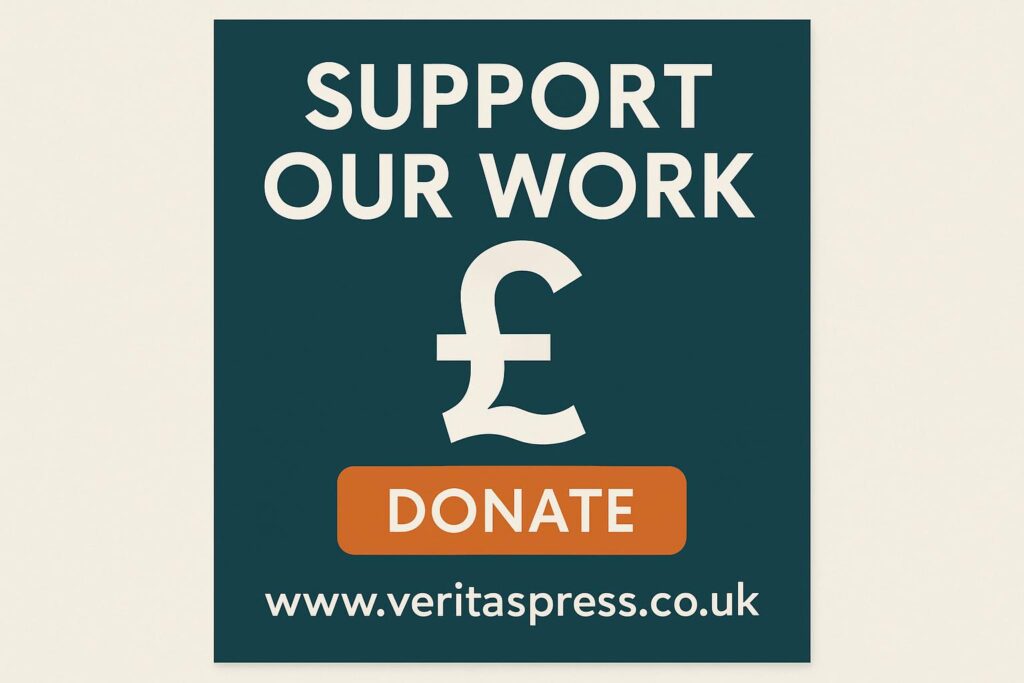
‘The situation for mothers and newborns in Gaza has never been worse. In the AL-NASSAR hospital, we’re seeing hospital corridors lined with women who’ve just given birth. In my six missions to Gaza, I have never seen it this bad,’ spokesman says.
GAZA – The humanitarian picture UNICEF laid out in Geneva was stark and simple: “The situation for mothers and newborns in Gaza has never been worse.” That sentence, delivered by UNICEF’s James Elder after what he described as his sixth mission to Gaza, should be read as both description and indictment. In hospitals where corridors have become delivery wards, premature infants share incubators and oxygen lines, and doctors make life-and-death triage decisions with one hand tied behind their backs, the failure is systemic and preventable.
Below is a deeper, investigatory analysis that connects eyewitness testimony, medical testimony, NGO findings, watchdog reporting, operational constraints and the legal and policy context, and draws a sharper line of accountability for how a modern health system can be allowed to collapse.
What’s Happening In The Hospitals, Eyewitness And Medical Testimony:
At Nasser Hospital in southern Gaza, displaced women give birth in corridors because wards are full; incubators are full, oxygen is rationed, and power cuts are routine. “We’re seeing hospital corridors lined with women who’ve just given birth,” UNICEF’s James Elder said. Staff report 60–80 child admissions per day for malnutrition and associated illnesses, a caseload unheard of in peacetime.
UNICEF’s Ricardo Pires and Reuters’ reporting documented the dire risk facing incubated newborns in Gaza City: tanks encircling Al-Helou, shelling close to hospital wards, and at least a dozen babies in incubators threatened by combat in their immediate vicinity. “It is time to move them because Gaza City again has become a combat zone, but moving them where? There is no safe place for them to go,” Pires told Reuters. Evacuating incubated infants would mean transporting them in improvised carts, wrapped in blankets, with portable oxygen, a transfer likely to expose infants to infection, hypothermia and oxygen failure.
A volunteer nurse’s filmed account from Gaza City shows wards emptied, equipment scarce, and medics exhausted, an eyewitness record that medical capacity is not merely stressed but fractured. In short, the clinical environment that newborns and pregnant women require, continuous power, sterile conditions, neonatal intensive care, formula and antibiotics, is intermittently and increasingly absent.
The Operational Choke Points: Blockade, Access Denials, And Lost Supplies:
This crisis is not an unforeseeable “fog of war” problem; it is a predictable consequence of prolonged siege plus intermittent military assault. Gaza has lived under a blockade for nearly two decades. That structural restriction means spare parts for incubators, fuel for generators, neonatal consumables, and medical-grade baby formula must be imported under tight controls. UNICEF and hospital staff report requests for more incubators and neonatal equipment have been delayed or denied at critical moments, a grim bottleneck when every incubator can be the difference between life and death for a premature baby.
Interviews and NGO statements reveal the layered problem: even when international shipments are approved, logistics in Gaza (crossing points, security screening, fuel to run hospitals) frequently fail to deliver supplies to the bedside. MSF and WHO warnings that hospitals are “on the brink” are not rhetorical; they point to concrete shortages of oxygen, sterile kits, blood transfusion materials and trained neonatal nurses.
Who Is Responsible? Military Tactics, Humanitarian Guarantees And Legal Obligations:
International humanitarian law (IHL) protects medical facilities and civilians. When hospitals are shelled, ambulances are obstructed, or when sustained operations make functioning medical care impossible, the parties to the conflict carry legal obligations to prevent predictable civilian harm. Human Rights Watch has concluded that some conduct by Israeli forces in Gaza forced patient displacement, denial of essential services, and incidents in and around hospitals, warrants investigation for potential war crimes. That is a legal and moral claim with operational consequences: if hospitals are not effectively protected, the death toll becomes a foreseeable outcome of military strategy.
Israeli authorities respond that operations target Hamas and that humanitarian aid has no formal limits; they also sometimes assert that armed groups endanger hospitals. But the practical effect of the shortages, the bombed wards, the forced evacuations, falls on civilians, pregnant women and newborns. The conflict’s asymmetry in power and access means that the enforcement of protections for medical care must be proactive and guaranteed, not aspirational.
NGO Testimony On The Ground: MSF, UNICEF, WHO And The Operational Breakpoints.
- MSF (Doctors Without Borders) publicly suspended some Gaza City activities because its clinics and staff were encircled and under direct threat. The organisation said the risk to staff and patients had become unacceptable, forcing a withdrawal from life-saving operations in critical zones. MSF’s emergency coordinator described the situation bluntly: clinics in Gaza City were “encircled,” forcing suspension of services even as demand surged.
- UNICEF: The agency has repeatedly warned of acute risks to newborns and mothers and called for evacuations of incubated infants, but evacuation is a near-impossible choice without secure corridors. James Elder and Ricardo Pires’ on-the-ground testimony frames infant evacuation as a desperate act, not a solution.
- WHO: The World Health Organisation’s repeated warnings that Gaza’s health system is “on the brink” are backed by data: multiple hospitals are non-functional, fuel shortages, destroyed infrastructure and interrupted referral chains. WHO’s public statements call for secure, sustained humanitarian corridors and protection of medical personnel.
These statements are not abstract; they document operational collapse. MSF stopping services; WHO warning of systemic failure; UNICEF asking for evacuation, together they form a mosaic of institutional failure that is the predictable offspring of access and protection denial.
Human Impact: Names, Scenes, And The Record Of Avoidable Loss.
Investigative reporting collects human detail to test institutional claims. Reuters and AP interviews reveal repeated, specific tragedies:
- Narges — a premature infant removed from the womb after her mother was killed; her ongoing survival is unknown as medics and humanitarian staff lose contact.
- Nancy Abu Matroud — age 22, who lost twins during a premature birth while displaced and whose remaining child requires cancer treatment now inaccessible after children’s hospital closures. Her testimony, “We are just asking for a shelter. I don’t want to lose the daughter I still have”, is a direct human plea against systemic failure.
These are not isolated anecdotes. Human Rights Watch and other watchdogs have compiled repeated testimonies over months of women who spoke of starvation in pregnancy, miscarriages during enforced displacement, and infants who succumbed not to combat wounds but to the absence of formula, heated water, or oxygen. The consistent pattern across testimonials is chilling: babies are dying from preventable conditions in a place where, with unimpeded aid and protection, many would have survived.
The Ethical And Operational Dilemma Of Evacuation:
UNICEF’s call to evacuate at-risk incubated infants is ethically compelling; it prioritises the immediate life of the child. But the investigation shows evacuation is also an admission of failure of protection inside Gaza: if hospitals are safe, evacuation wouldn’t be necessary. Evacuation plans face four practical obstacles:
- No guaranteed safe destination — other facilities are damaged or full; cross-border transfers require host state approval.
- Risks during transfer — improvised transport exposes babies to infection, hypothermia and oxygen interruption.
- Permission and corridor guarantees — military actors must commit to safe passage; history shows such agreements are fragile.
- Who assumes responsibility? — long-term care, legal custody and family reunification after evacuation are unresolved and ethically complex. Investigators must document who funds, receives and retains administrative responsibility for evacuated infants.
Evacuation can save lives, but framed as a substitute for protection and unimpeded aid, it is a Band-Aid over systemic abandonment.
Lines Of Accountability And Investigative Imperatives:
A rigorous investigative frame requires asking the following and demanding documentary answers:
- What formal decisions and which authorities (military, customs, political) rejected or delayed neonatal equipment shipments and why? Records of correspondence, crossing approvals and denial memos must be produced and reviewed.
- Which military operations took place in proximity to hospitals, what intelligence informed those operations, and what operational safeguards, if any, were put in place to protect patients? Targeting protocols and collateral-damage assessments must be accessible to independent investigators. Human Rights Watch has already recommended investigations into strikes and conduct around hospitals; these should be pursued with evidence preservation.
- How were humanitarian requests from UNICEF, WHO and MSF processed at crossing points? Independent audits of UN/OCHA crossing logs, the volume of neonatal supplies requested vs delivered, and verification of inspections should be published.
- What medical evacuation plans exist, who approved them, and what contingency planning was in place to evacuate vulnerable newborns and pregnant women before the encirclement of Gaza City? Documents and timelines will reveal whether calls to evacuate were ad-hoc desperation or part of any pre-planned humanitarian contingency.
These are not merely bureaucratic curiosities; they trace responsibility for preventable deaths.
Policy And Legal Recommendations (Investigative And Remedial):
For investigators, policymakers and humanitarian operators, the immediate priorities should be:
- Immediate, verifiable humanitarian pauses negotiated with credible monitoring (UN, ICRC) to permit life-saving deliveries of neonatal equipment, fuel and formula.
- Independent, international forensic investigations into attacks on health infrastructure and obstructions to aid, with subpoena powers for operational records, crossing logs and communications. Human Rights Watch’s call for investigations is the correct first step.
- A standing neonatal rapid-response unit pre-positioned in safe zones with equipment and teams trained to manage mass incubator transfers, funded and supported by a coalition of states and NGOs.
- A transparent chain of custody for evacuated infants, with legal safeguards for family reunification and long-term care agreements.
- Sanctions or conditionality tied to demonstrable protection of civilians and unimpeded aid if parties continue to obstruct life-saving relief.
Final Assessment, Justice, Memory, And A Test Of International Will:
This is not an emergency whose arc can be neatly closed with a single shipment or symbolic condemnation. The collapse of neonatal care in Gaza is the product of structural restraint, contested military operations around civilian infrastructure, and the failure of timely, secure humanitarian access. That reality imposes responsibility, operational, legal and moral, on combatants and on the international community that enables or tolerates the conditions.
If independent investigations confirm that preventable restrictions, denials, or direct attacks materially contributed to the deaths and suffering of mothers and newborns, those findings must lead to accountability mechanisms and changes in how humanitarian protection is enforced in modern warfare. For investigators and journalists: preserve hospital logs, interview medics and mothers, collect customs paperwork, and demand transparency from crossing authorities. For governments and multilateral agencies: prioritise lives now, not later.
The photographs and testimonies emerging from Gaza, premature infants crammed four to an incubator, mothers forced to give birth on corridor floors, nurses hand-pumping oxygen while generators die, should be enough to compel urgent international action. “In my six missions to Gaza, I have never seen it this bad,” UNICEF spokesperson James Elder said, warning that hospitals have become “graveyards for newborns.” Doctors at Al-Aqsa Martyrs Hospital told Al Jazeera they are “choosing who gets oxygen and who doesn’t” as fuel runs out, while a medic at Al Helo Hospital, speaking to Reuters after Israeli shelling, said, “We are moving babies in cardboard boxes because we don’t have functioning incubators anymore.” Amnesty International has called these conditions “the deliberate strangulation of Gaza’s health system,” while Human Rights Watch noted that blocking incubators and fuel amounts to “collective punishment that may constitute a war crime.” Activists and legal experts argue that the systematic denial of medical care to infants and mothers goes beyond a humanitarian crisis: it is evidence of a policy of forced dispossession, starvation, and extermination. If these images and testimonies fail to galvanise international action, then the global system’s claims of protecting the vulnerable will collapse under the weight of its own hypocrisy, revealed not through words but through inaction, complacency, and complicity in what UN experts increasingly describe as acts of genocide.
